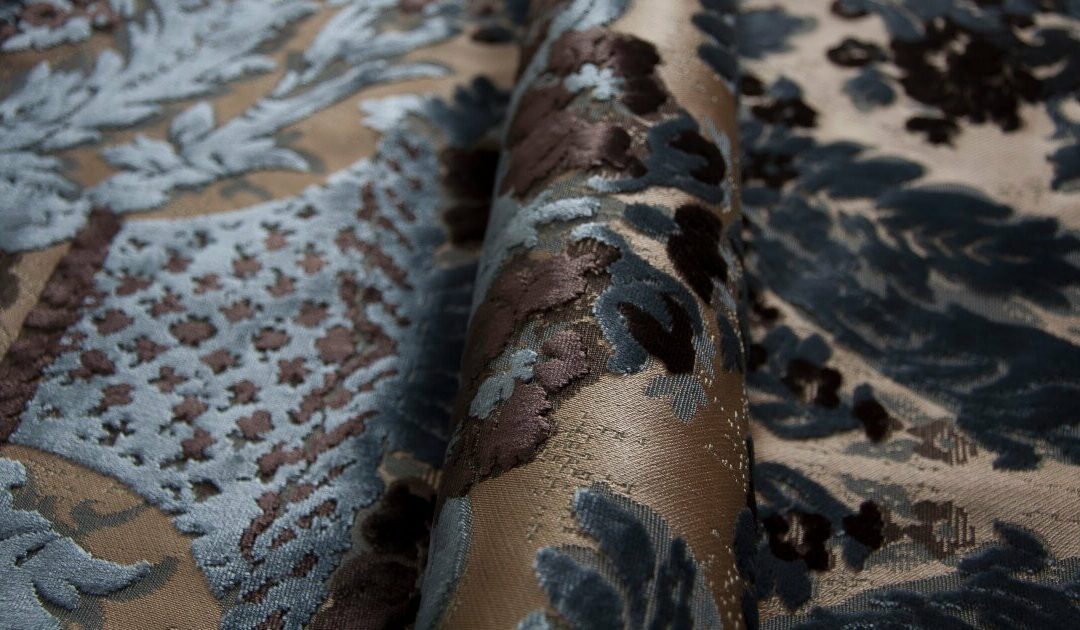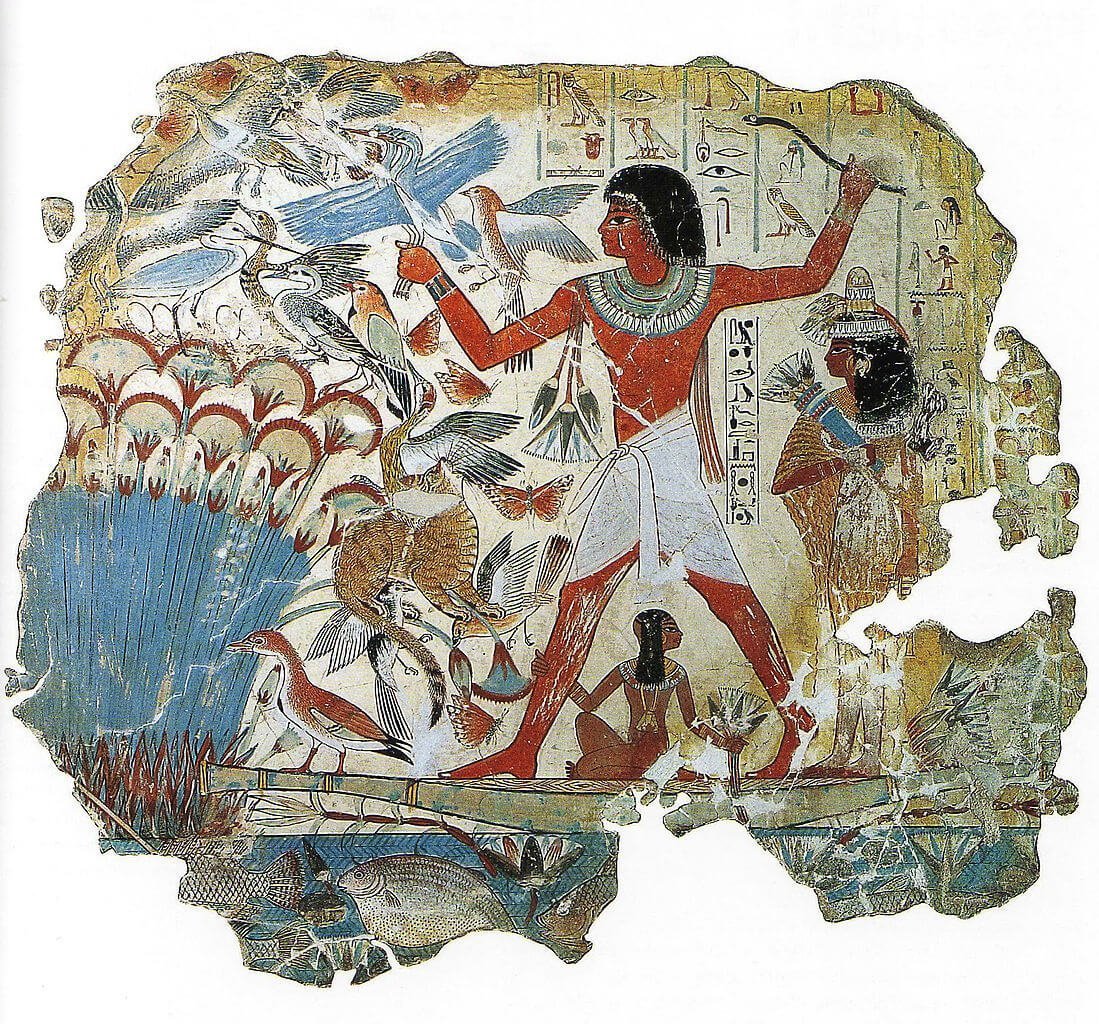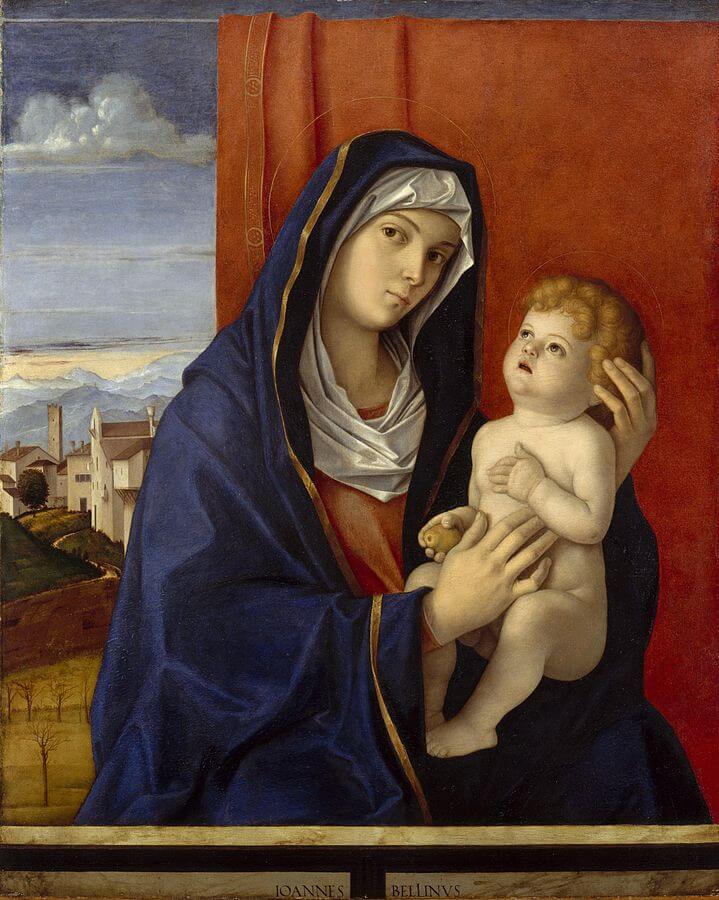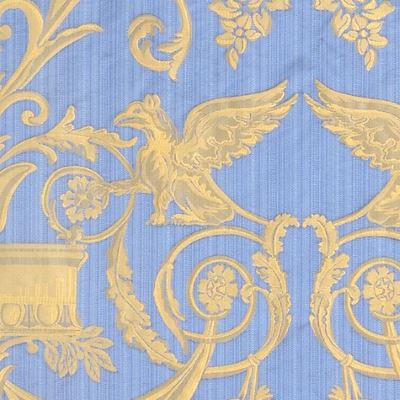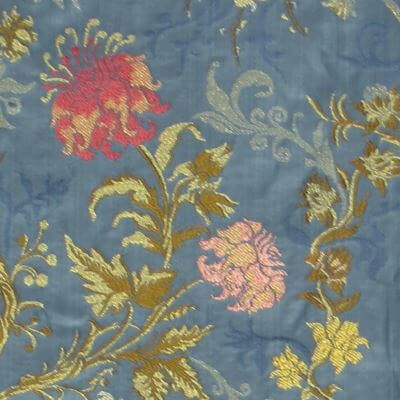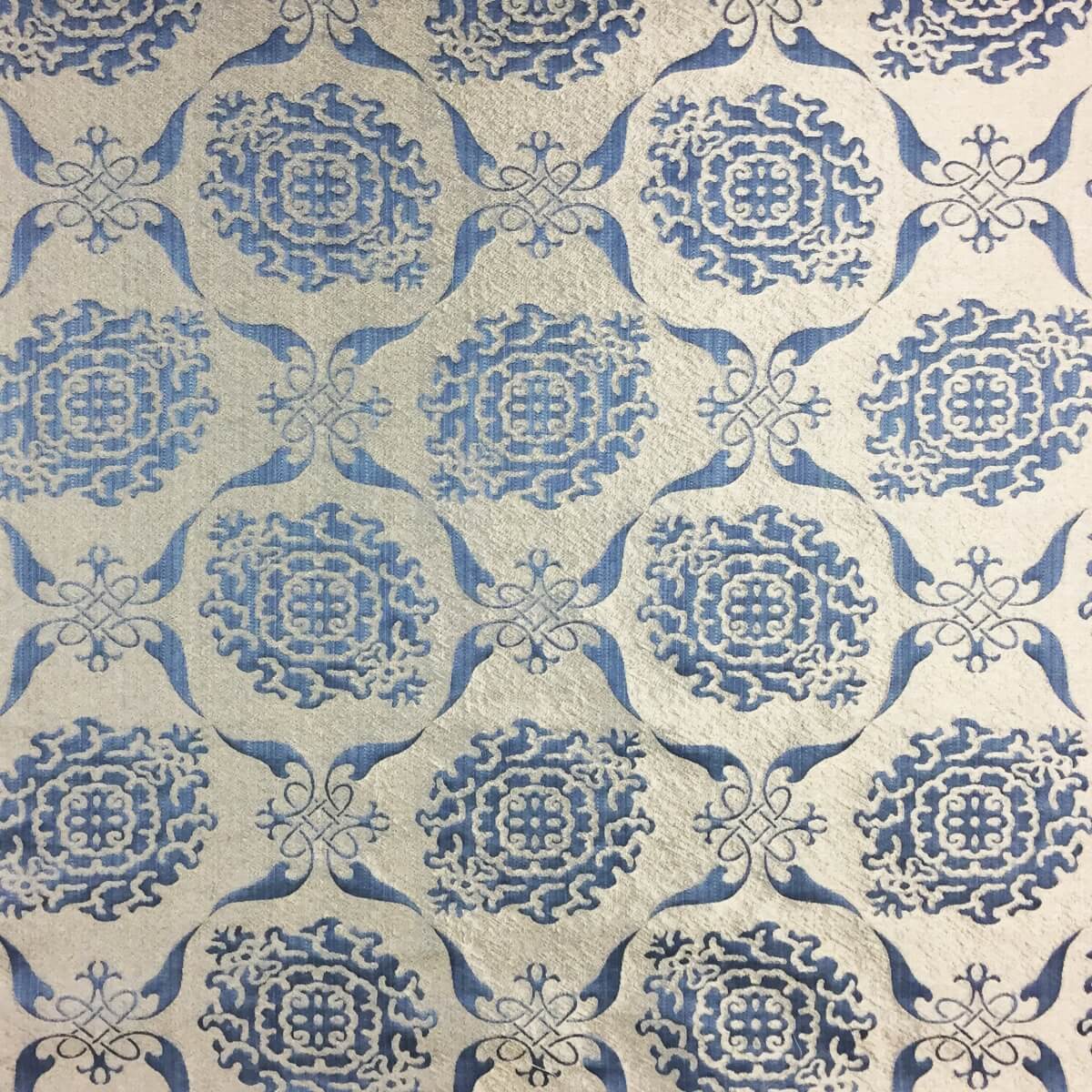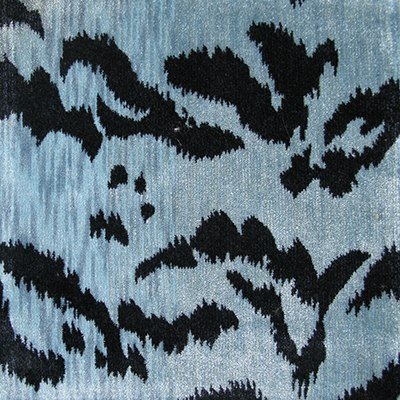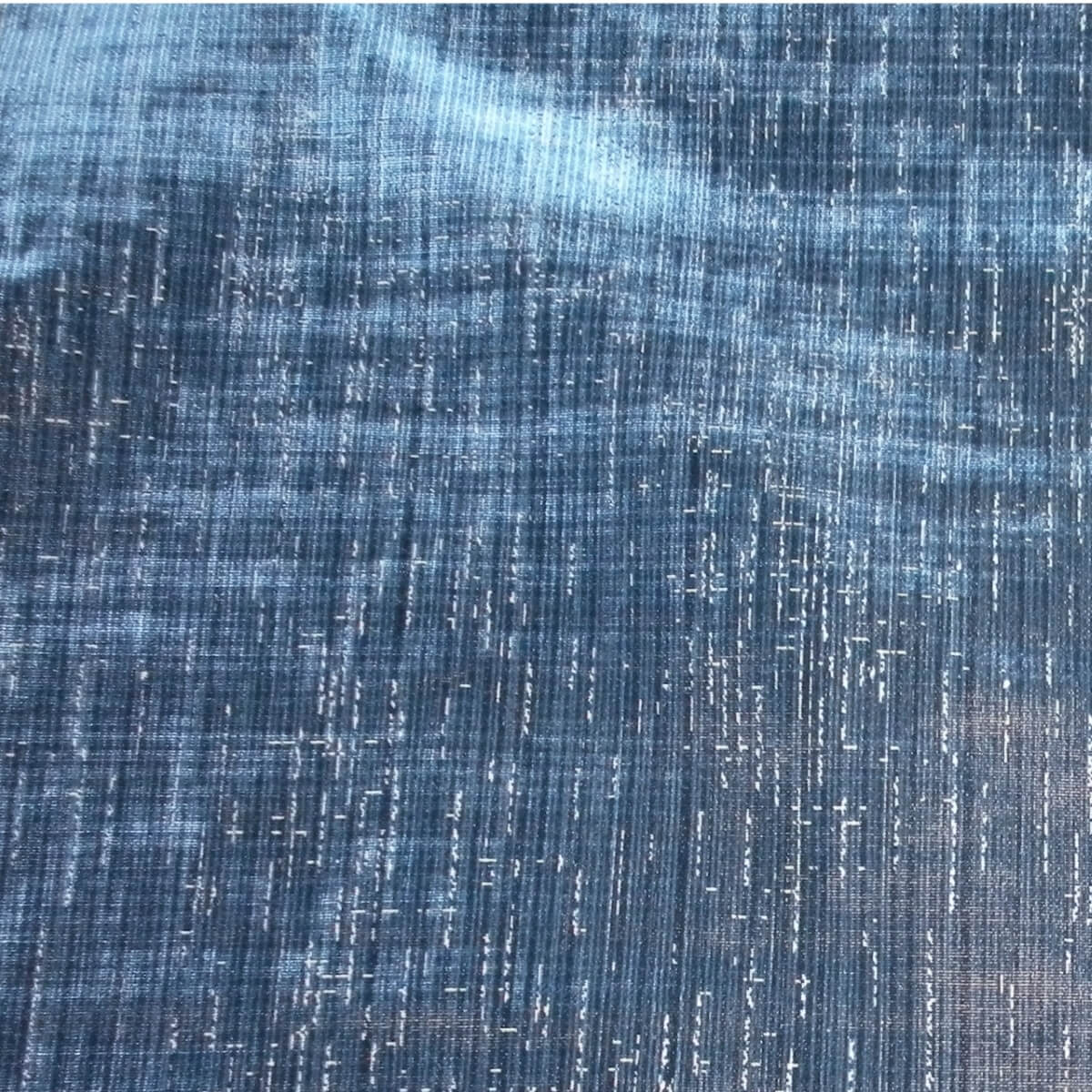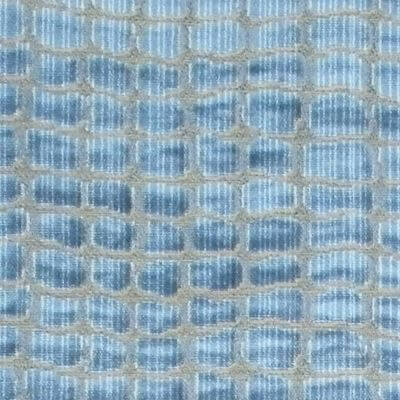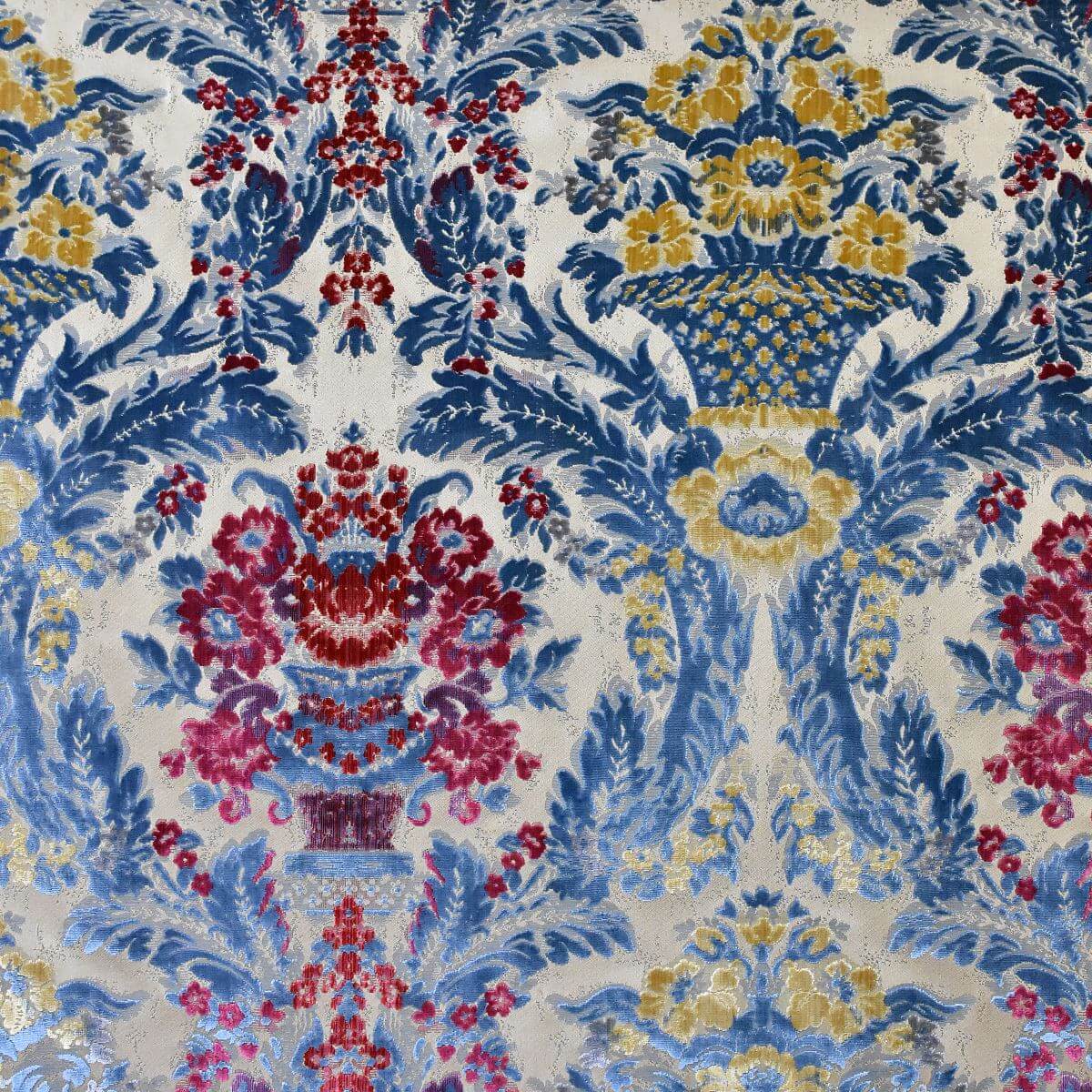Whatever the shade, a blue upholstery fabric evokes a feeling of calm and increases concentration. However, just as in the interior design world this colour has had its ups and downs, so too in history it was loved by some peoples and hated by others. It would appear that the most ancient ones couldn’t even see it.
A few history facts on the colour blue
That’s it: scientists claim that in ancient times human beings couldn’t recognise blue. There’s some evidence to support this theory: cave art shows animals and people painted in red, brown, black and other colours, but blue is not one of them. And it’s completely absent in Homer’s works, too: he says the sea is “wine coloured” – and more than once.
Ancient peoples seem to have first recognised it around 2500 BC, when the Egyptians produced the first blue pigments, mixing limestone, sand and minerals such as azurite and malachite, both containing copper. And they totally fell in love with it.
Fresco from the Tomb of Nebamun, Thebes (ca. 1350 a.C.)
On the other hand, Ancient Romans didn’t feel that partial to this colour: some barbarian peoples, such as Celts, used to paint their faces in blue before they entered the battlefield.
However, antique peoples had two ways to dye fabrics in blue and to get pigments they could use in paintings: respectively, woad and lapis lazuli. The former is an extremely common plant of Northern Europe, employed by poor classes to dye their clothes during the Middle Ages; the latter is a precious stone Egyptians and Mesopotamians already knew. Whereas the former (Isatis tinctoria) was easily affordable, the latter was quite expensive: that’s why it’s used only in the most important paintings – and by the painters who could afford buying it -, such as those featuring Holy Mary, since the Late Middle Ages.
Giovanni Bellini, Madonna and Child (ca. 1485)
Besides, during the 16th century a new plant producing a shade of blue reached Europe: it was called Indigofera tinctoria and could turn fabrics indigo. As its name reveals, it came from India and was therefore expensive. A solution to this problem, though, came from chemistry some time later, during the 19th century: indigo was produced synthetically, as well as other shades of blue, such as Prussian blue.
This is why upholstery fabrics can now offer a wide range of blue tones.
Some shades for blue upholstery fabrics
Associated with sea and sky, blue has the power to create a relaxing mood, ranging from delicate and elegant shades to dark and intense ones. In our catalogue you can find fabrics for upholstery in all of these tones, with the unique patterns from our archive. Here they are.
Sky blue fabrics offer a soft note for muted touches of colour and spaces that inspire peacefulness.
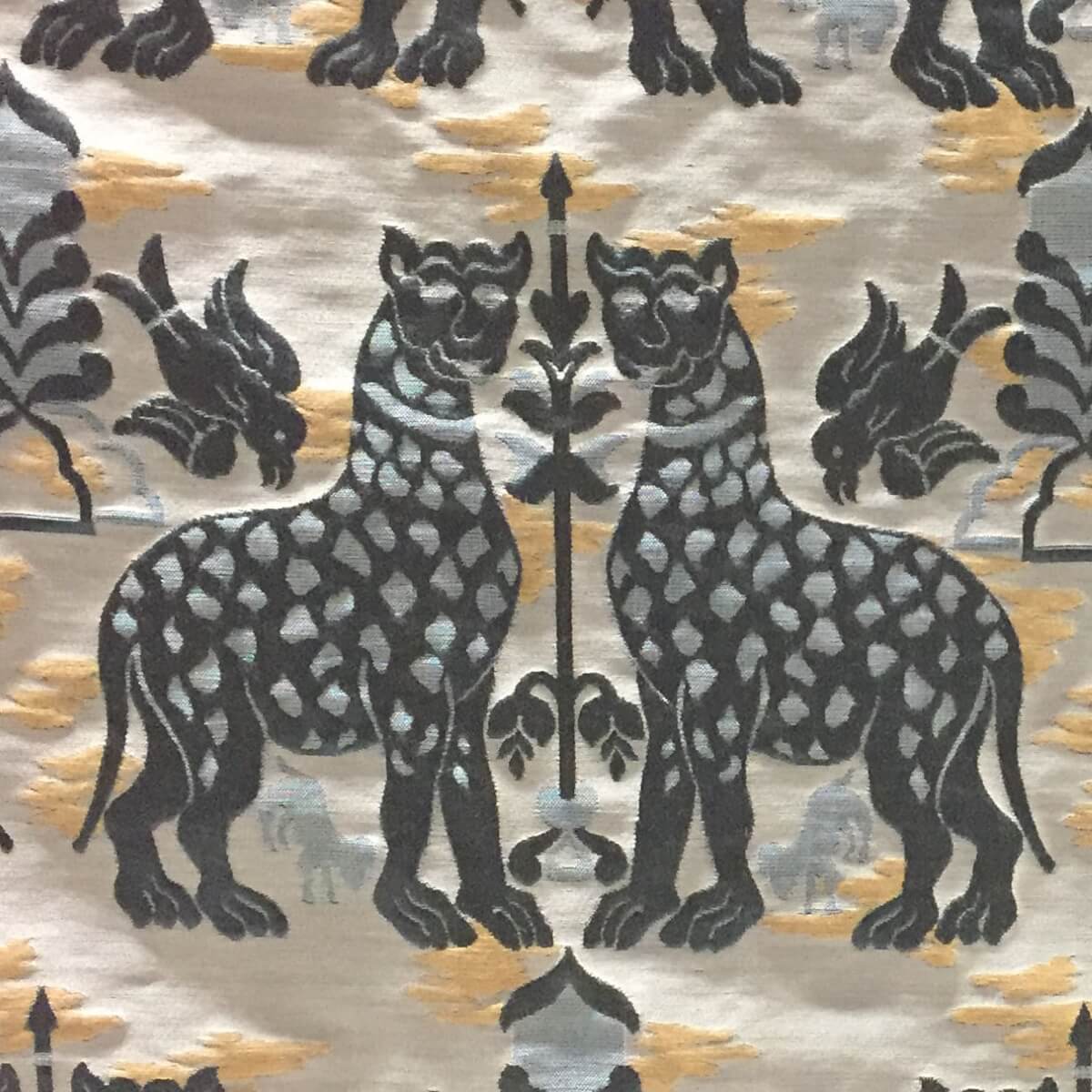
Fiere Brocatelle
blue
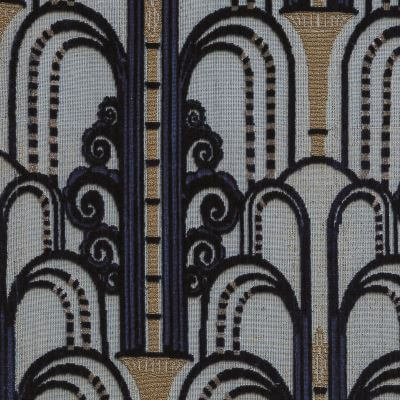
Walls Handmade Velvet
blue-gold
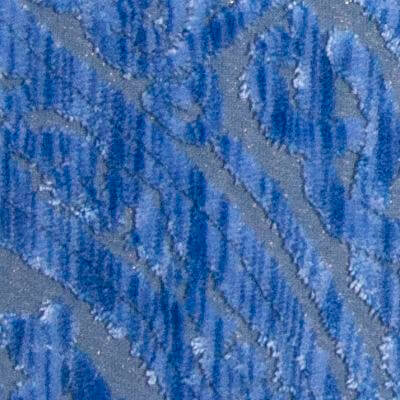
Da Vinci Velvet
egeo
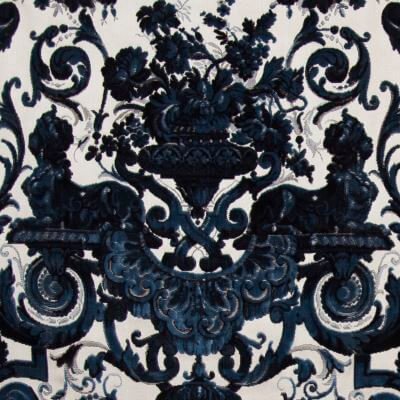
Grottesche Multi-coloured Velvet
petrolio
Blue, egeo and petrolio are dark tones, perfect to create strong focal points and to neatly contrast with soft colours. The resulting style is bold, but stylish.
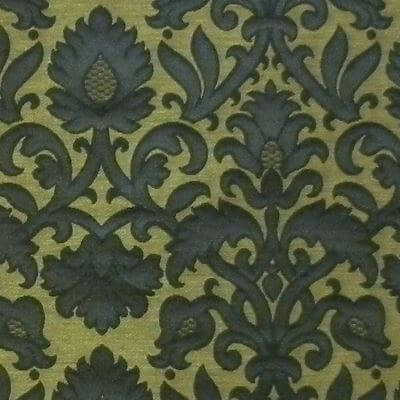
Rinascimento Brocatelle
turquoise
Lighter shades such as indigo and turquoise are meant to make the most of patterns extremely rich in details, as many of ours are.
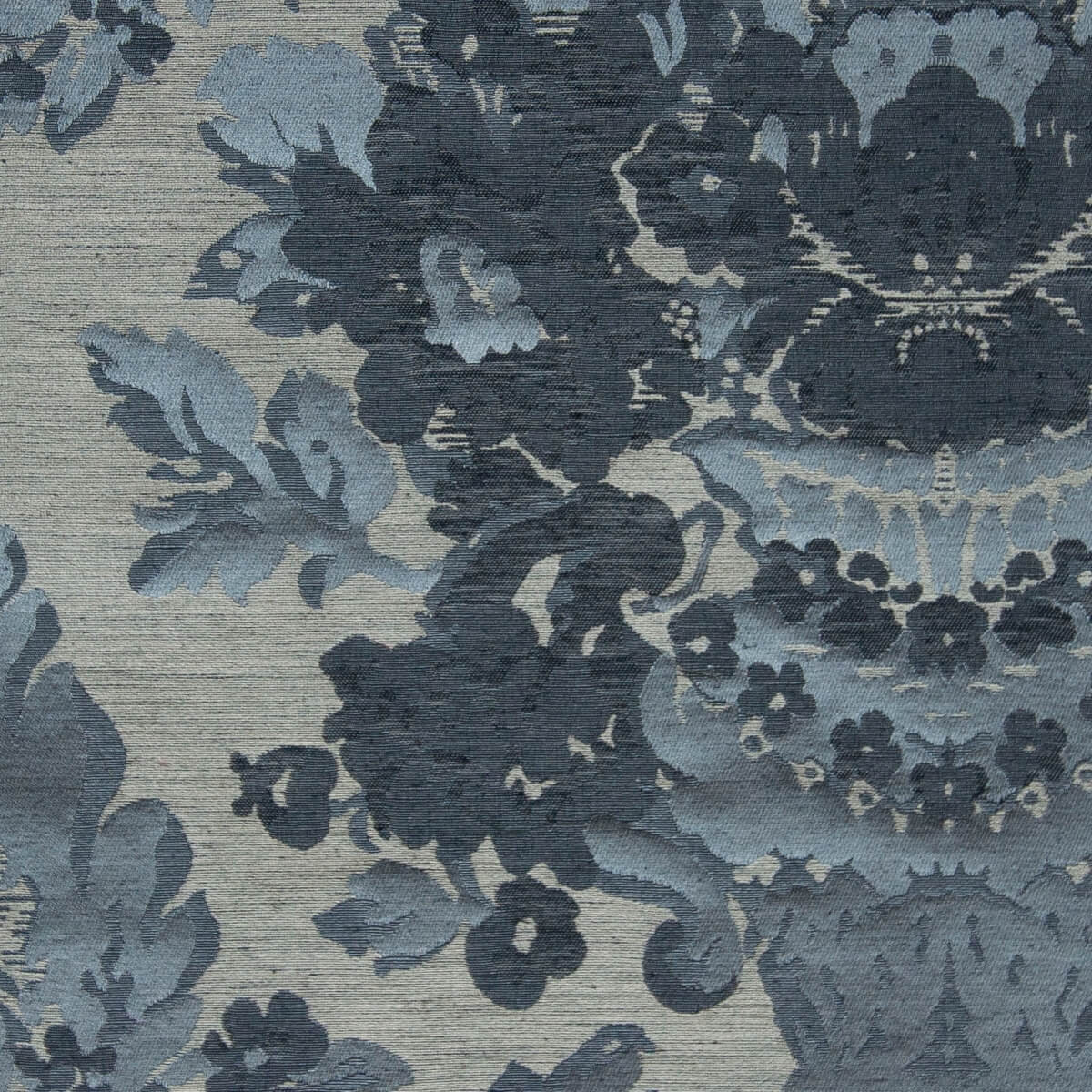
Giardino Brocatelle
antique sky blue
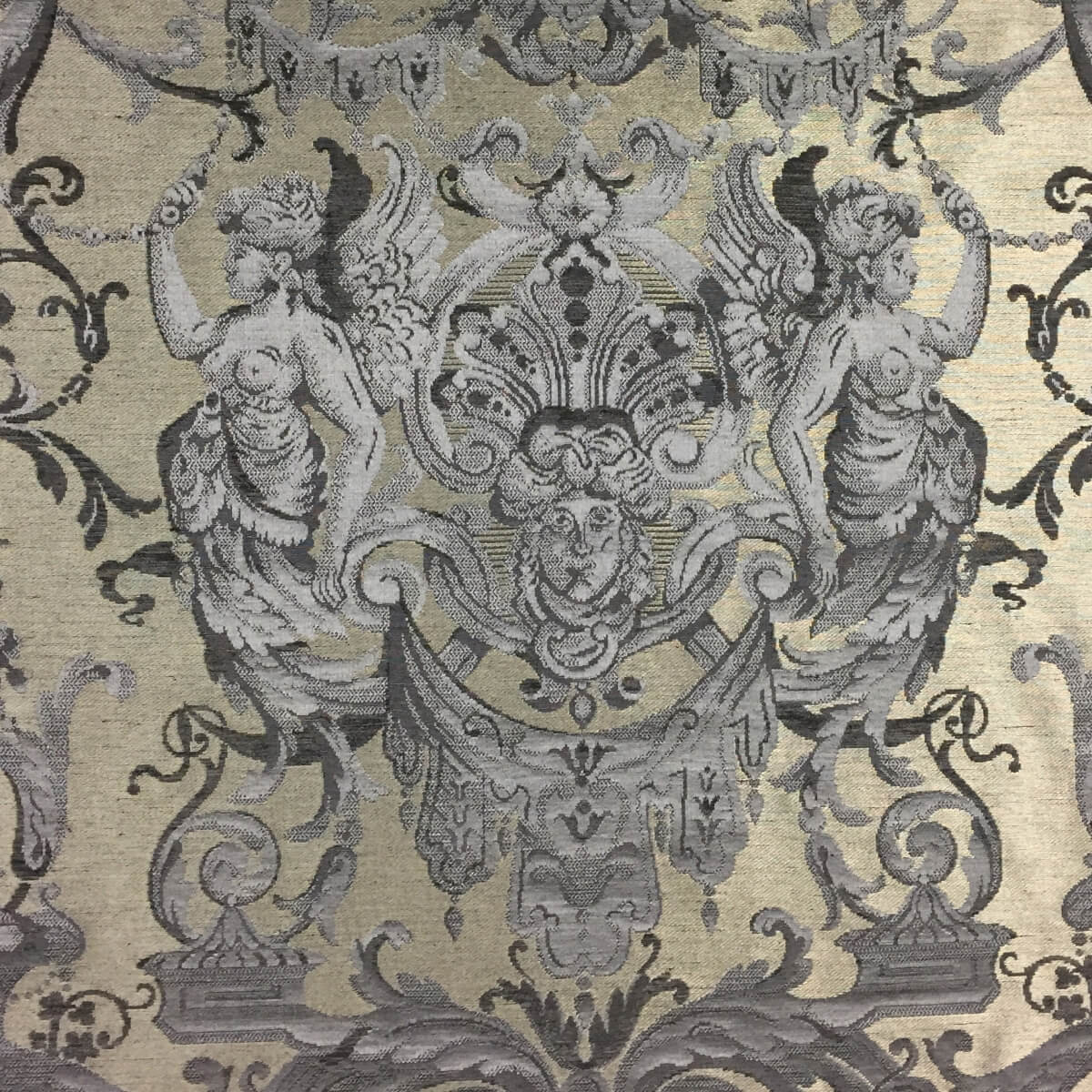
Grottesche Brocatelle
antique sky blue
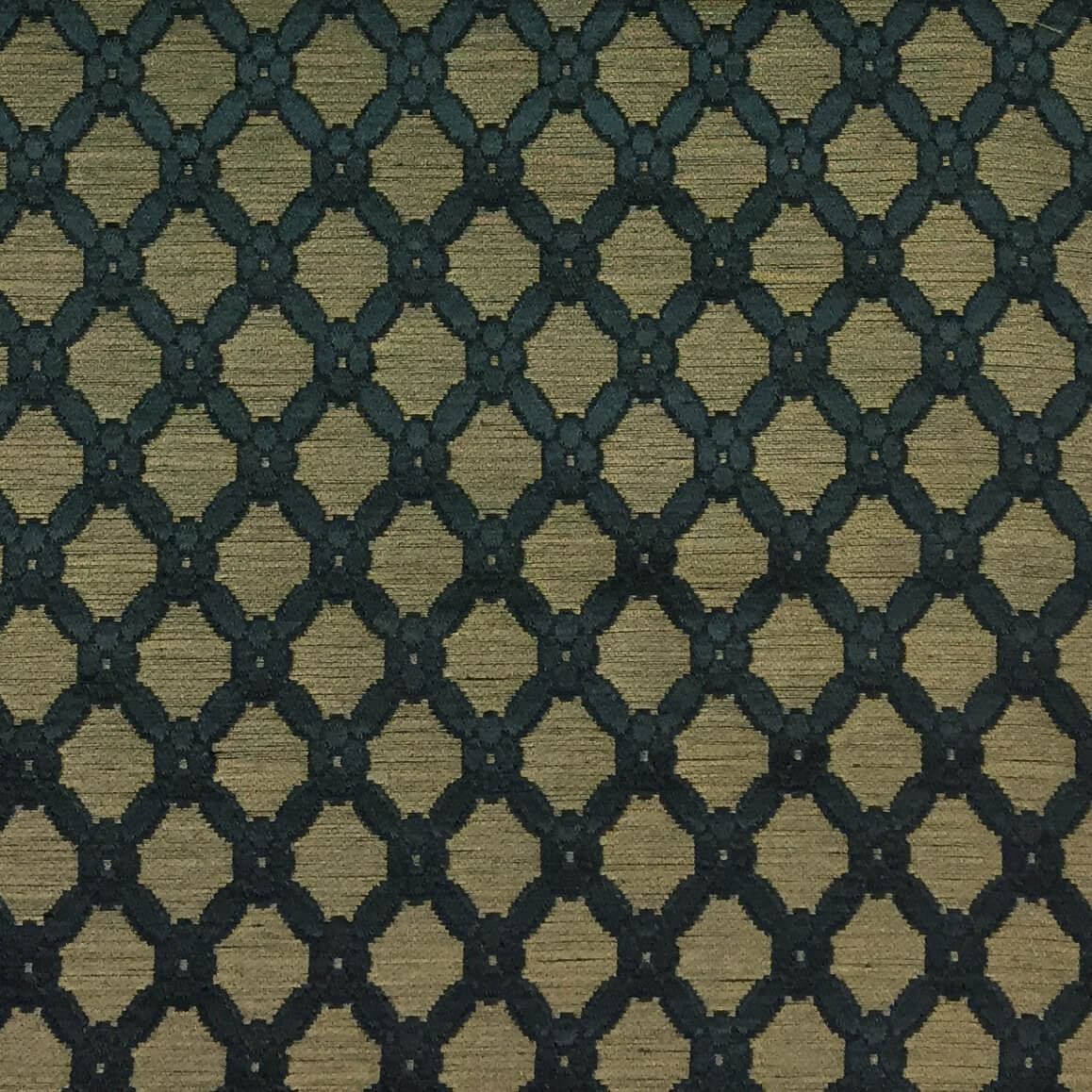
Griglia Brocatelle
antique turquoise

Serto Brocatelle
antique turquoise
Lastly, the “antique” versions of sky blue and turquoise are the ideal colours for vintage furnishings, thanks to their antiqued touch, which makes them a little darker than the correspondent base form.

